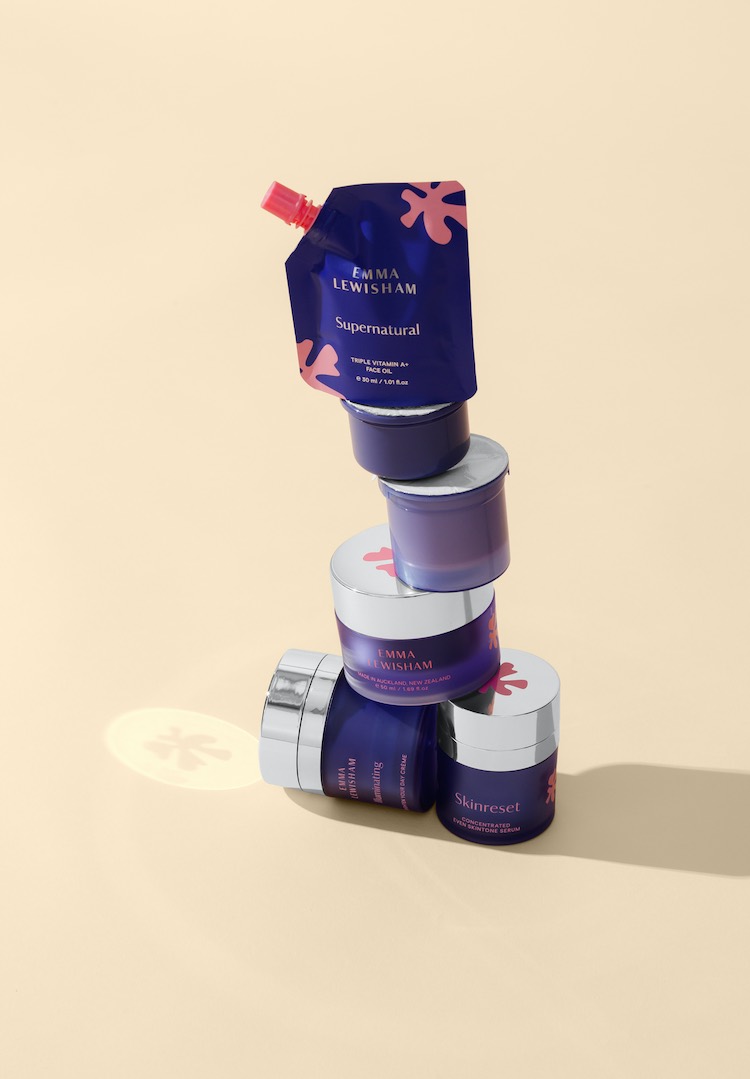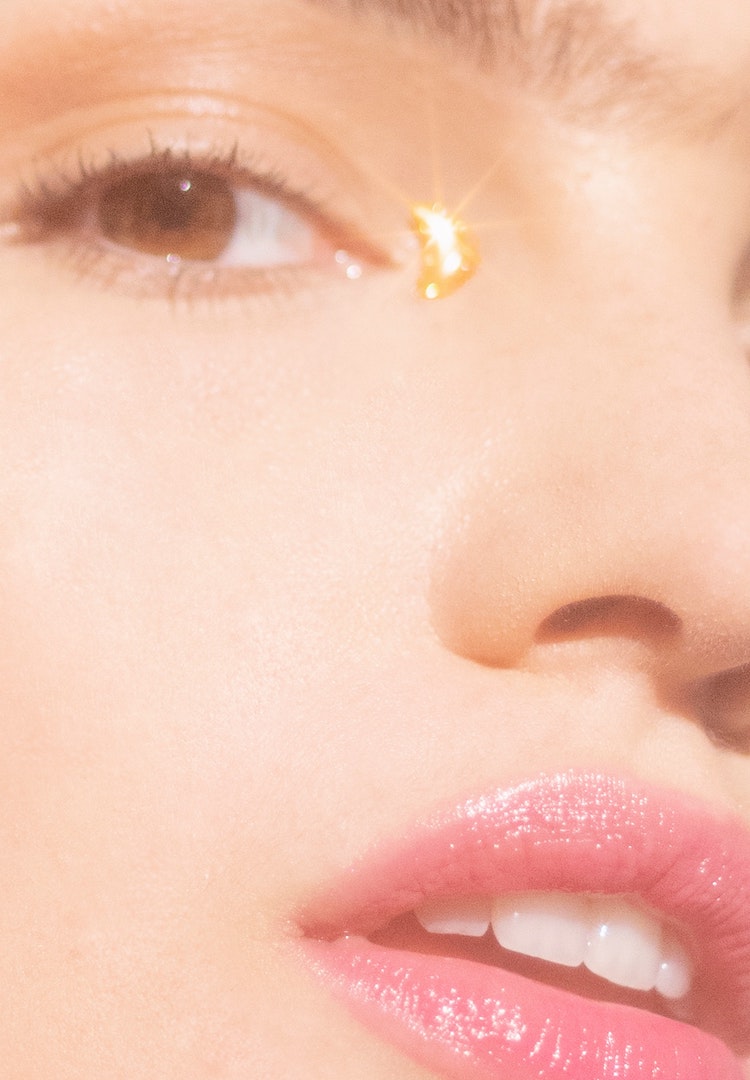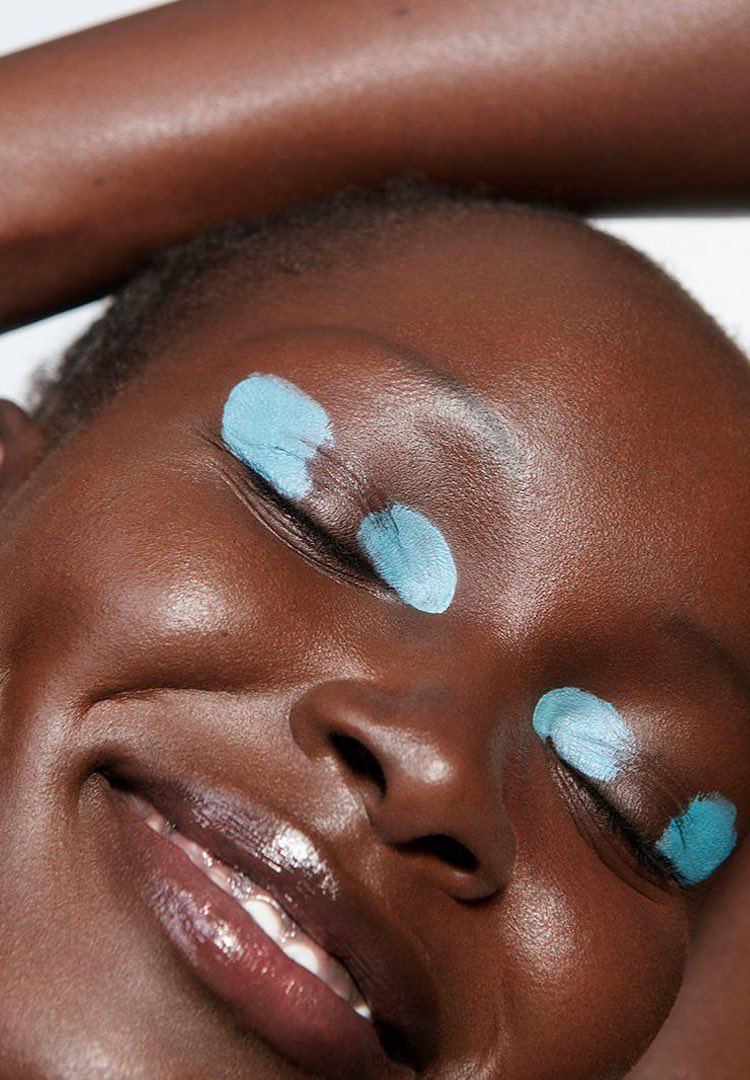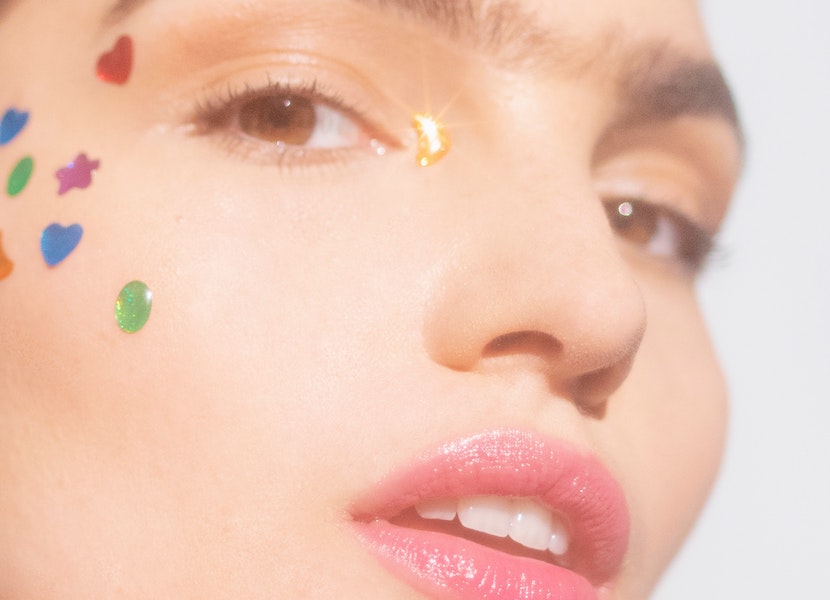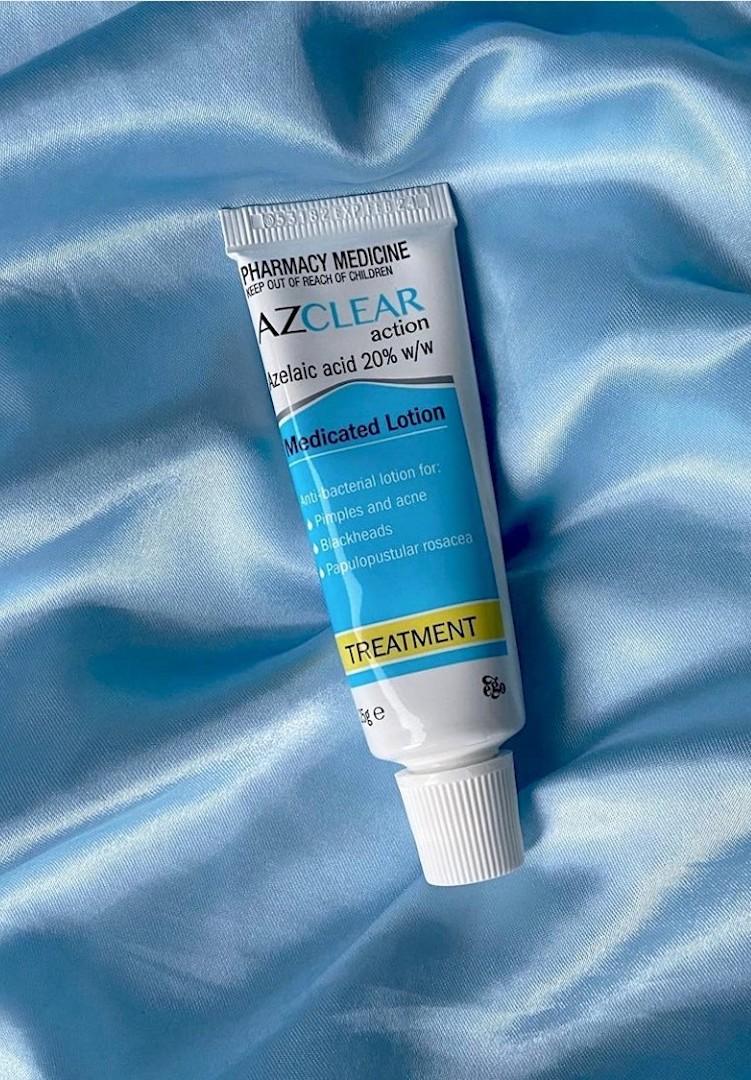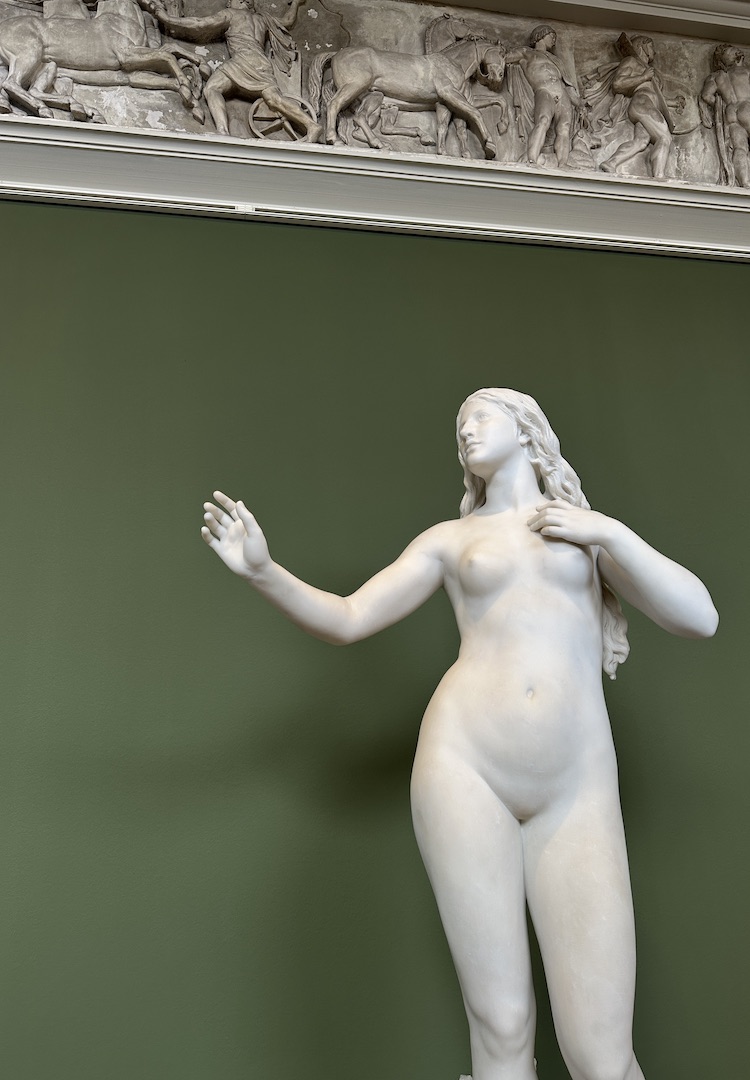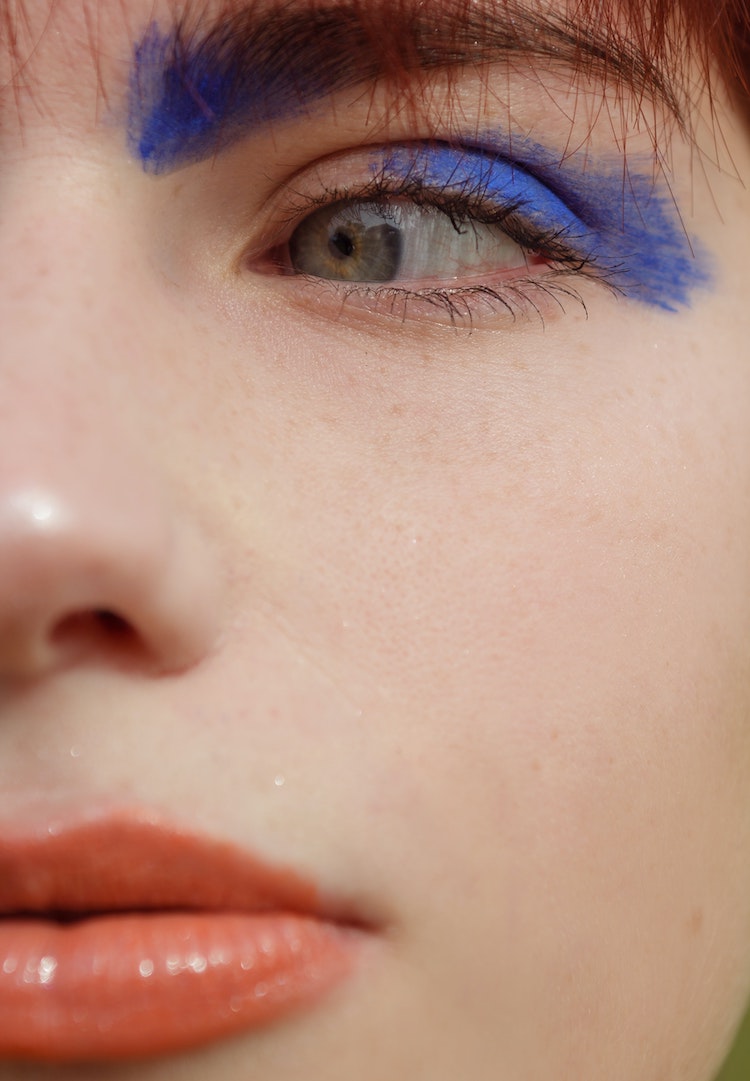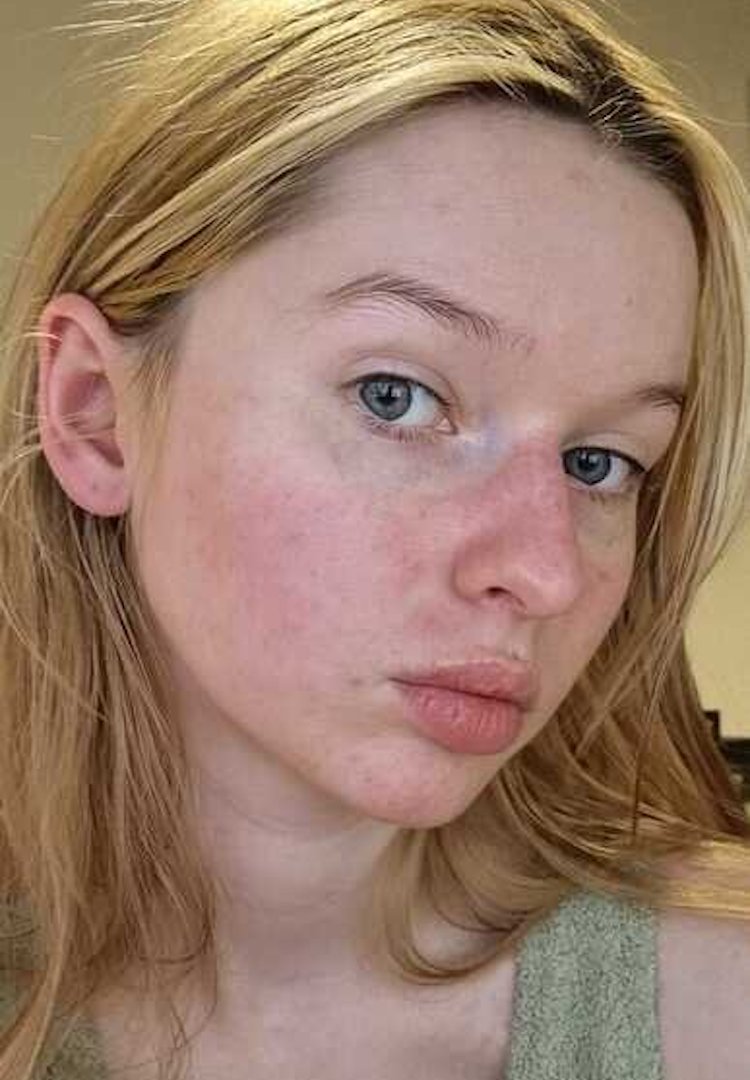How medication saved my hormonal acne
WORDS BY EMILY HOLGATE
The results speak for themselves.
I was ten years old when I got my first zit – a juicy white-head right on my cupid’s bow. Mortified, I spent the entire day at school hoping no one would notice – and nearly made it through unscathed – until one girl asked in disgust what “that thing on [my] face” was. I went home crushed, embarrassed and feeling, for the first time in my life, ugly.
My mum assured me the pimple would go down in a matter of days, and that my skin would be back to its clear ten-year-old self before long. Little did I know this was just the beginning of a thirteen-year (and counting) battle.
We like nosy people. Don’t be shy, head to our Beauty section for more.
It started with a few zits here and there, a gradual increase in facial oil production, and a change in texture and colour, turning my once olive skin tone into a greasy, red hue. Before long I was twelve years old and struggling daily with acne, blackheads, and rapidly declining levels of self-esteem.
Finally, at fourteen years old, a doctor gave me what seemed to be the answer to my suffering: the contraceptive pill. Ignoring the now obvious (and concerning) fact that I was merely a pubescent virgin, I jumped at anything that would clear my breakouts.
And it did. Sort of. Six months on the pill saw my skin transform into the soft, healthy glow I sought after all those years. This lasted until one morning in my final year of high school, when I woke to find a bump on my chin. You know, the painful under-the-skin blinders that you can’t pop or touch.
Before I knew it, I had developed an entire face of angry, cystic acne, plummeting my self-esteem right back into the ground. I tried and tested a number of ‘natural’ routes, attempting to clear my skin with a ‘clean’ vegan diet and drinking four litres of water a day (yep, four). My parents, after months of watching my failed clean-eating endeavours, finally convinced me to start a course of Accutane.
The drug worked quickly, clearing up my skin in a matter of months. I was thrilled to say the least, even though it gave me dry skin and lips, joint and muscle pain, and made my skin hyper-sensitive to the sun. But alas, it was clear.
It wasn’t until I was living out of home at twenty years old, that my vengeful nemesis came back (surprise bitch, I bet you thought you’d seen the last of me). I tried going on the pill again – now that I also actually needed it for contraception – but never fully got the results I was after. While my acne wasn’t cystic at this point, I was still experiencing frequent breakouts and uneven skin texture.
This brings me to the past year, when I began looking into skincare ingredients and learning about the right products for my skin type. With a social media feed filled with influencers like Skincare by Hyram and Derm Doctor, I began hearing conflicting opinions. Use The Ordinary. Don’t use The Ordinary. Exfoliate. Don’t exfoliate. The list goes on. I was feeling overwhelmed, and my acne was getting worse.
My cystic breakouts returned, but this time along my jawline, particularly around the time of my period. Although my cycle was irregular, every time I was greeted with a beard of painful, angry spots, without a doubt, I would get my period soon after. Once I noticed this pattern, I decided to take it to the experts.
After seeing a doctor, a dermatologist, getting blood tests and even an ultrasound, I found the root of my problem: polycystic ovarian syndrome (more commonly known as PCOS). I’d heard of the condition before, but never fully understood it until my diagnosis. While the symptoms are different for every woman, for me, it finally gave an explanation to hormonal breakouts, excess facial hair (peach fuzz), and irregular periods. My main concern being acne, I was prescribed an antibiotic but didn’t see much improvement.
Enter Spironolactone (let’s keep it simple and call her Spiro)
I had seen Spiro’s name pop up before when digging through comments on skincare TikToks, and on desperate, late-night Google searches (‘why do I have cystic acne as an adult?’). But only after receiving a prescription from a doctor, and dosage advice from a dermatologist, did I start to see why this drug was often prescribed to women in their twenties and thirties with hormonal acne.
Spiro is actually designed to treat high blood pressure and excess fluid retention. But dermatologists have been prescribing it for years to treat acne and excess hair growth in women, both common symptoms of PCOS. This is effective for women like me, who don’t want to alter their hormones by taking the contraceptive pill, or endure the harsh side effects of Accutane.
I began with a very small dose of 25mg, and was advised to increase by another 25mg every two weeks until hitting 100mg – the ‘heroes dose’, for lack of a better term. It can often take up to six months to see the full results, but it’s common to experience clearer skin within the first few weeks. While I still have a long way to go on my Spiro journey, I was pleased to see my cystic zits finally start to calm down.
Previously, at the end of my period, it would take weeks for breakouts to finally deplete. And by that time, the next breakout was already brewing. It was an endless cycle. Now on Spiro, I still get a couple of under-the-skin spots on my jaw and neckline, but they clear quicker and are far less red and painful.
But what exactly does Spiro do? I turned to Dr Shyamalar Gunatheesan, founding dermatologist at ODE Dermatology, to get into the nitty gritty.
“It’s one of my favourite drugs,” she tells me. “I treat lots of hormonal acne, rosacea and even hair loss in women. Acne is quite multisectoral, so your diet, genetics and hormones all play a part. Women are constantly subjected to hormonal fluctuation, and as we get older – and also when breastfeeding – you once again experience fluctuations in hormones.
“A lot of people don’t realise that both men and women have testosterone. Us women have male hormones called androgen, which fluctuate at different times of our menstrual cycle. Androgens essentially latch onto androgen receptors to increase oil gland production or hyper-stimulate these glands to produce more oil.
“We then get more sebum congestion, clogging of the pores, and that’s when you get a blackhead or a whitehead that then becomes a pimple. This inflammation in our skin can result in hormonal acne.
“There are a few different ways to treat female, adult acne. One of the methods is a hormone modulating tablet like Spiro. I like it because it doesn’t dispense estrogen or progesterone into your body, it just modulates the androgen receptor. By latching onto this receptor, you have less expression of androgen on your oil glands or on your hair follicles.
“I also like it because it’s not an antibiotic, so you’re not going to have an effect on your gut health. You’re simply going to the source of the acne and fluctuating hormones, and modulating it,” she explains.
When asking Dr Shyamalar about how long Spiro takes to kick in, she says “it does take two or three months for some people, but some of my patients notice a big difference within a few weeks – their hair gets thicker, they have less oil production on their face and scalp, and generally less congestion”.
But what (if any) are the side effects?
“Sometimes periods can be irregular, or you can experience breast tenderness. It’s a blood pressure medication so it makes some people a bit dizzy. It’s also a diuretic, so I always tell patients to drink lots of water to make up for the loss of fluids. In some people it can also increase potassium levels in the blood, so you will need to watch your potassium intake,” Dr Shyamalar tells me.
“Otherwise it’s a very well tolerated drug, and unlike medication such as Accutane or Isotretinoin, it doesn’t make you sensitive to the sun. It’s still not safe to fall pregnant on the drug, but you can actually experience better effects when combining it with an oral contraceptive pill – if you want.”
I also ask Dr Shyamalar if there’s an initial ‘purging’ stage, something many people experience on drugs like Accutane, or even when starting out on a retinol-based product.
“Unlike other acne tablets, you don’t really get that initial purge as much with Spiro,” she says. “It might just take at least six weeks to kick in. I always say to build up the dose gradually. It’s different for each person but for facial and hormonal acne, most people would get a pretty good result on 100mg daily.
“There are a lot of studies out there which show that around 40 percent of people notice a 60 per cent improvement with Spiro; around 30 percent notice a moderate improvement; and only about six percent of people don’t notice any improvement on hormonal acne. So it’s got a pretty good hit rate.
“I see PCOS patients all the time who want to see a dermatologist about acne breakouts, facial hair, and thinning of the scalp hair. Spiro can help treat all of these issues, and sometimes even help to lighten periods that are heavy to begin with. It’s a great drug, it’s just not as well-known as antibiotics or Accutane.”
Our conversation only further solidified what I had already begun to realise – this drug is a miracle worker (well, close to it). And after only taking it for eight weeks so far, I’m eager to see the results to come.
For more information on hormonal acne and your treatment options, speak to your GP. For further reading, try this.

